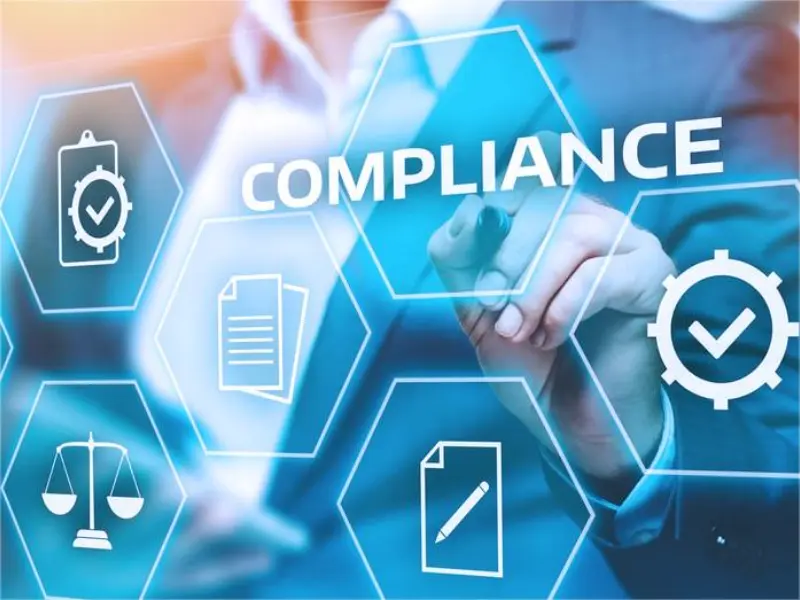- Compliance in cyber security is about ensuring that the organisation adheres to various industry standards, international regulations and laws related to protecting data privacy. It involves enforcing technical, operational, and administrative controls that ensure data protection and better risk management.
- Achieving compliance in cybersecurity is a complex but necessary task for organisations. By staying proactive in cybersecurity practices, companies can significantly enhance their security posture and reduce the risk of cyber threats and regulatory penalties.
Cybersecurity compliance refers to adhering to standards and statutory requisites set by entities, laws or governing bodies. Companies handling digital assets need to implement controls and security practices to minimise the risk to sensitive data. Achieving compliance in cybersecurity is an ongoing process that requires dedication, resources, and continuous improvement.
Cybersecurity compliance
Compliance in cyber security is about ensuring that the organisation adheres to various industry standards, international regulations and laws related to protecting data privacy.
It involves enforcing technical, operational, and administrative controls that ensure data protection and better risk management. These controls include but are not limited to technology solutions, security measures, policies, and procedures.
By achieving compliance, organisations demonstrate their commitment to safeguarding sensitive information and mitigating potential cybersecurity risks. This allows businesses to attract more potential customers and partners. But most importantly, it helps avoid hefty payments in regulatory fines and penalties and keeps the business reputation intact.
Numerous compliance frameworks and standards exist to guide organisations in establishing robust cybersecurity practices, including NIST Cybersecurity Framework, General Data Protection Regulation (GDPR), Health Insurance Portability and Accountability Act (HIPAA) and Payment Card Industry Data Security Standard (PCI DSS).
Also read: HGC: Bringing cybersecurity assurance to Hong Kong’s telecommunications industry
How to achieve cybersecurity compliance?
Achieving compliance in cybersecurity is a complex but necessary task for organisations. Here are some steps that can help you achieve compliance.
Also read: How can generative AI be used in cybersecurity?
1. Understand applicable regulations
Begin by identifying the relevant cybersecurity regulations and standards that apply to the organisation based on your industry, geographic location, and the type of data you handle.
Common regulations include the General Data Protection Regulation (GDPR), the Payment Card Industry Data Security Standard (PCI DSS), and the Health Insurance Portability and Accountability Act (HIPAA). Ensuring compliance with these regulations often requires using HIPAA-compliant electronic signature solutions, especially in healthcare settings where the protection of patient information is paramount.
2. Conduct a compliance gap analysis
Perform a comprehensive assessment of your current cybersecurity practices and compare them against the requirements outlined in the applicable regulations. This gap analysis will help identify areas where business falls short of compliance and needs improvement.
3. Develop a compliance strategy
Based on the findings of the gap analysis, create a clear roadmap and strategy for achieving compliance. This strategy should outline specific tasks, responsibilities, timelines, and resources required to meet the compliance requirements. Enlisting the assistance of external cybersecurity experts is a good choice, Virtual Cyber Assistants, for example, can help align cybersecurity controls and practices to achieve compliance goals in a very cost-effective way.
4. Implement security controls
Implement the necessary security controls and measures to address the compliance requirements. This may involve deploying firewalls, encryption, access controls, intrusion detection systems, and other security technologies. Additionally, establish cybersecurity policies and procedures that align with the compliance standards.
5. Incident response plans
Develop and document incident response plans to effectively handle cybersecurity incidents. An effective cyber incident response plan should detail the necessary steps for detecting, analysing, mitigating, and reporting incidents in case of a cybersecurity event and include clear lines of communication for notifying relevant authorities and affected individuals, as required by the regulations.
6. Regularly monitor and assess
Implement monitoring systems, such as Security Information and Event Management (SIEM) tools, to detect and respond to security incidents promptly. Conduct periodic audits and assessments to evaluate the effectiveness of your controls and identify areas for improvement.
7. Provide cybersecurity training and awareness
Educate employees on cybersecurity best practices and the importance of compliance. Regularly train employees on data protection, handling sensitive information, and recognising phishing attacks. Foster a culture of security awareness within the organisation to prevent human errors and improve overall compliance.

